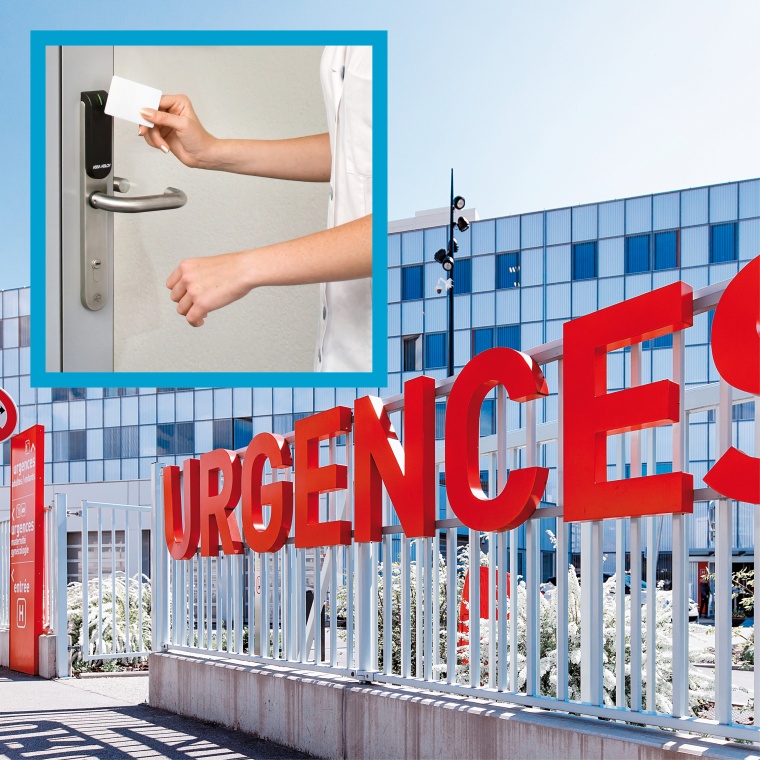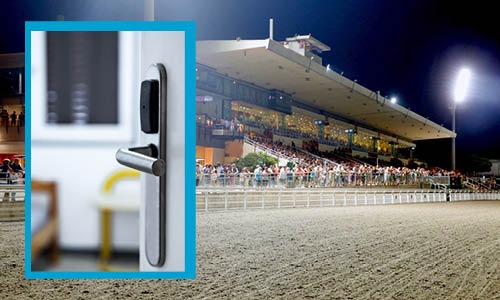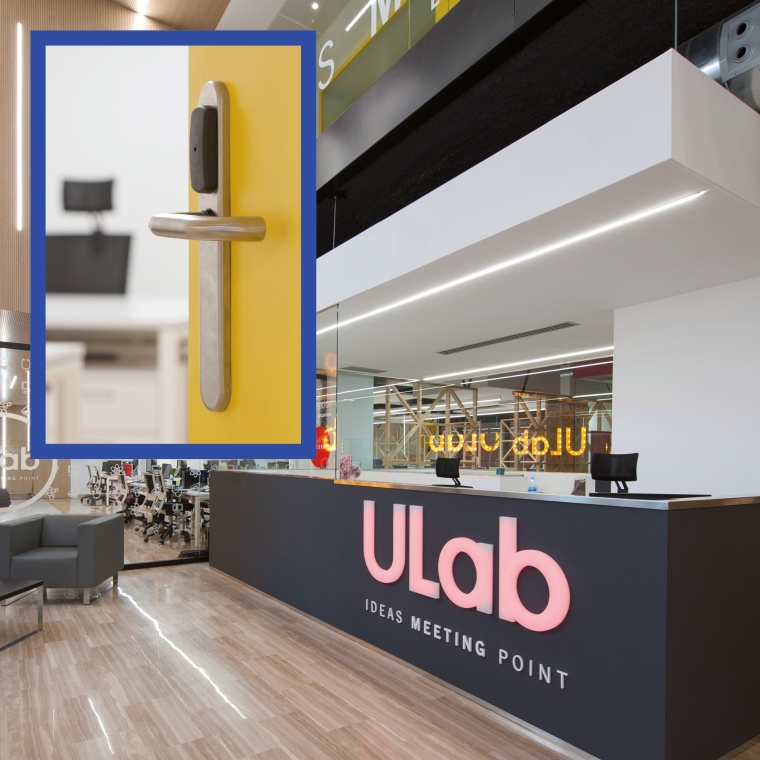Wireless Access Control: Multiple Solutions for a More Efficient Workplace




Access control is becoming a wireless-first technology. No ifs or buts. The advantages of wireless over wired locking — in installation and operating costs, flexibility, control and more — are just too clear. One of the selection of products from Assa Abloy described below could provide your first taste of the convenience of wireless locking systems.
Of course, you can still secure some doors effectively with traditional, wired electronic locks. The front door, genuinely high-security interior doors, and so on. But if you want to gain real control over your premises, there is no sensible, cost-effective way to do that without wireless devices and solutions. This applies whether you are looking for a new system — your first or an upgrade — or extending existing security to more doors or new sites.
The next step is matching your needs with the capabilities of different technologies. Wireless is not a one-size-fits-all solution. Its effectiveness hangs on making the best choice for your specific business. The right solution will make your workplace run more efficiently, and be more convenient for users, as well as boosting security by controlling everyone’s access better.
Removing the Key Management Workload
A specialist security team is beyond the budget of many small businesses. For building access control in these settings, CLIQ Go offers an easy, app-controlled way to run a programmable key solution. Any non-specialist can issue and program access rights into battery-powered keys via a user-friendly app. They can cancel any keys which are lost and those held by departing employees. Restricting temporary workers’ and contractors’ access to specific times only takes a few taps on a screen. CLIQ installation is simple, too: these key-operated locks are wireless, so there’s no drilling or cabling around the doors.
Another option for small to medium-sized businesses, SMARTair, is an access management system that offers an easy upgrade from physical keys to digital credentials. Stored on an RFID card, fob, wristband or smartphone, these encrypted electronic credentials can be cancelled or reissued at any time, so you wave goodbye to tracking down lost keys and changing locks.
At the Hippodrome Côte d’Azur for example, managers faced a familiar security dilemma: how to stop mechanical keys being duplicated without authorization, jeopardizing employee and visitor safety. They chose a SMARTair Update on Card access control solution to drastically reduce the time and money wasted in getting locks replaced and keys recut. With their new system, they can delete users’ lost cards instantly. Easy, flexible credential management enables them to program granular access personalized for every site user.
“In the long term, SMARTair access control is cheaper than keys to manage,” says Bernard Arnaud, Supervisor for Accommodations at Hippodrome Côte d’Azur. And because SMARTair is a modular system, scalability is built in. The Hippodrome Côte d’Azur can extend or fine-tune its access system as required.'
Single-Seat Management
In large-scale organizations, access control often operates within a complex security or building management system. Integration is the number one priority. Another Assa Abloy wireless technology, Aperio, is built on an open platform specifically for interoperability. Aperio wireless cylinders, electronic handles, escutcheons, server rack devices and security locks work seamlessly with security systems from more than 100 different third-party manufacturers. The wireless locks offer more control through the building than would ever be cost-effective with wired doors. One control panel still manages everything, minimizing workload and complexity.
At the Centre Hospitalier Métropole Savoie (CHMS), a large new hospital for France’s Haute Savoie, Aperio wireless escutcheons and electronic wireless handles work alongside wired doors secured with the system’s wall readers. The battery powered devices integrate natively and online with an ARD access management system. A network of 228 communications hubs connects every Aperio lock wirelessly to the central access system, so wired and wireless access points at CHMS are managed together, with real-time management logs, remote door opening and free time slot management.
Because Aperio locks are wireless, the hospital could introduce many more layers of security and secure doors without incurring excessive installation or operating costs, including for sensitive offices and drug stores. Now staff no longer haul around bunches of keys or waste time hunting down the right key. All their individual permissions are stored on a single, programmable RFID credential. Having one management interface means that security teams administer and maintain access control autonomously and time-efficiently, in part by streamlining laborious everyday tasks.
Smart Devices Become Mobile Keys
Almost a fifth of respondents to one security survey admitted losing a credential during the previous twelve months. A new generation of mobile phone-based access solutions offers a cure: it’s harder to lose your phone, and you will quickly spot it missing. Passwords, PIN codes and biometrics add on-device security.
The fast-growing coworking and flexible workspace sector is already an enthusiastic adopter of mobile keys. At ULab in Spain, savvy managers chose Openow, the mobile key solution for SMARTair. It gives workspace residents an option to carry virtual keys on their smartphone. In this sector, image matters, and premises offering mobile credentials like Openow make a good impression. Phones replace plastic keycards, so there’s no need for a terminal at the reception desk. It’s slick, efficient and millennial friendly. “I would definitely recommend the SMARTair system, because of its design and technology,” says ULab director, Enrique Burgos Pérez.
Efficient Contractor Management
CLIQ Connect is an access solution designed to boost efficiency and sustainability for utilities or any business with a remote workforce or multiple contractors. In such a system, each keyholder carries one programmable key loaded with all their access permissions. To update key access rights, they pair it with the CLIQ Connect app. Facility and security managers amend access permissions via a Web Manager, online or back at base. Keys are updated remotely via a secure cloud connection between app and system. Keyholders can also be required to enter a PIN, for an extra layer of authentication.
At French fibre-optic network operator ZeFil, physical key management had become a hassle. CLIQ electronic, key-operated cylinders were available to fit each of ZeFil’s multiple door types, wire-free. To change a CLIQ Connect keyholder’s access permissions, ZeFil’s system administrator accesses the CLIQ Web Manager and updates it. The keyholder makes an encrypted Bluetooth connection between their programmable key and the app to instantly update permissions from the cloud. Keyholders no longer update in person, carry additional programming devices, or return to base to amend their access rights. All they need is a smartphone and the CLIQ Connect app. The resulting cut in fuel use means lower costs and a reduced carbon footprint.
Entry-Level Access Control
The easiest access solution to implement, Code Handle, is a battery-powered digital locking handle with a PIN keypad. It adds PIN code security to almost any interior door, without any need to install or manage access control software. This means that you no longer carry or keep track of mechanical keys for any public-facing door where you wish to restrict access — a stock room, a private office, a treatment room, a customer toilet or a medicine store, for example. Code Handle auto-locks when closed, adding another layer of safety and peace of mind.
Managers at the UK head office of marketing agency Thirst identified two doors that required an easy, low-cost security boost. Staff and visitors come and go all day, but they wanted to ensure that not everyone had open access to the server and the private meeting room. “We found Code Handle easy to install and a perfect solution for keeping private rooms accessible only to those employees that require access,” says Nigel Cattermull, founder, owner and managing director at Thirst.
most read

Security management, building security & perimeter protection: the winners of category E at the GIT SECURITY AWARD 2026
GIT SECURITY AWARD 2026: Security management, building security & perimeter protection - an overview of the most innovative solutions

When the Internet stumbles: Why DNS is important
When DNS fails, the internet stumbles-AWS outage proves resilience and redundancy are vital for digital trust

Machine & plant safety: The winners of category A at the GIT SECURITY AWARD 2026
GIT SECURITY AWARD 2026: Machine & plant safety - an overview of the most innovative solutions

Is Your Venue Ready for Martyn’s Law?
Martyn’s Law demands stronger security by 2027. Is your venue prepared to protect and respond?









